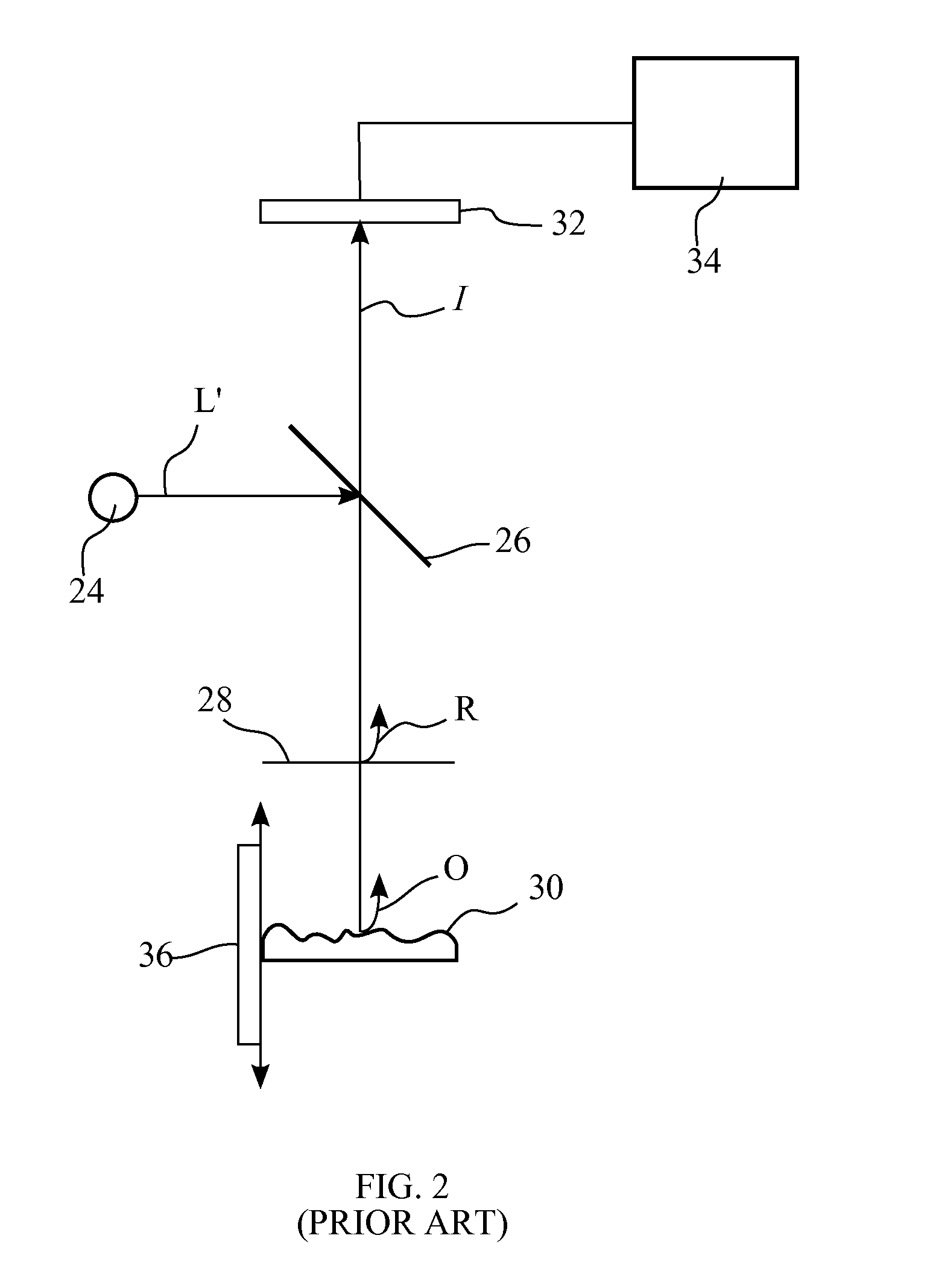Optical coherence tomography using spectrally controlled interferometry
a coherence tomography and optical coherence technology, applied in the field of optical coherence tomography using spectrally controlled interferometry, can solve the problems of inconvenient operation, inconvenient use, and inability to meet the specific application that is best addressed, and achieve the effect of reducing the coherence length of the fringes and improving the accuracy of measurements
- Summary
- Abstract
- Description
- Claims
- Application Information
AI Technical Summary
Benefits of technology
Problems solved by technology
Method used
Image
Examples
example
[0035]Referring to FIG. 5, assume that it is desired to produce modulation fringes with a peak at a distance l=2 mm from the reference surface 42 of a Fizeau interferometer. It is also desired to produce fringes with a modulation envelope E having full-width half-maximum (FWHM) visibility over a range w=10 μm along the direction of propagation and further with a period p=250 nm between interference fringes. Mathematically, the fringe envelope is described by the equation
I(τ)=δ(τ-τ0)⊗exp(-τ2τw2),(7)
where δ is the Dirac delta function, and is the convolution operator. In the time domain, fringes with a peak at a distance l=2 mm from the reference surface will
result from an object beam delay of
τ=2lc=1.33·10-11sec
with respect to the reference beam. Similarly, the time corresponding to the FWHM visibility range Σw and to the fringe period τp will be given by
τw=2wcandτp=2pc,
respectively. Note that the same fringe distribution is produced also for zero and negative values of the time dela...
PUM
 Login to View More
Login to View More Abstract
Description
Claims
Application Information
 Login to View More
Login to View More - Generate Ideas
- Intellectual Property
- Life Sciences
- Materials
- Tech Scout
- Unparalleled Data Quality
- Higher Quality Content
- 60% Fewer Hallucinations
Browse by: Latest US Patents, China's latest patents, Technical Efficacy Thesaurus, Application Domain, Technology Topic, Popular Technical Reports.
© 2025 PatSnap. All rights reserved.Legal|Privacy policy|Modern Slavery Act Transparency Statement|Sitemap|About US| Contact US: help@patsnap.com



